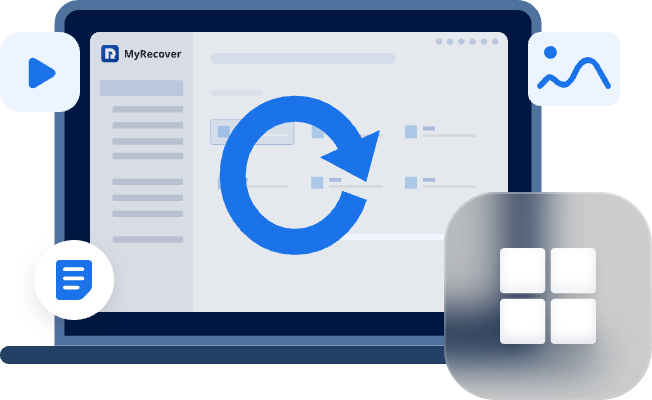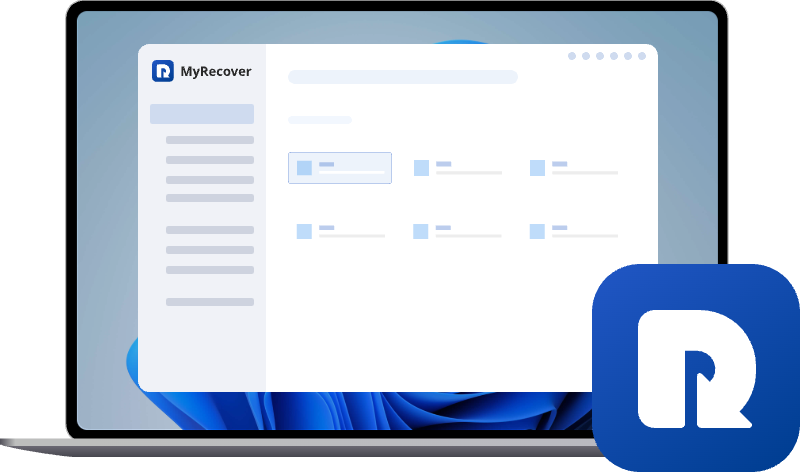Top Deleted DCIM Folder Recovery Solutions [2025 Updated]
Accidentally deleting the DCIM folder can cause panic, as it usually contains precious photos and videos. This article explains effective ways to recover a deleted DCIM folder from SD cards or Android devices.
Accidentally Deleted DCIM Folder from Trash. How Can I Recover it?
I deleted my DCIM folder from my phone accidentally. Then when I went to recover the folder from trash, a prompt asking "A folder named DCIM already exists. DO you wanna replace it? " with three options(* Skip * Replace * Rename)to click.
I accidentally clicked skip. And now I have lost my old DCIM folder from my phone. The new DCIM folder only has photos and screenshots that were taken after the old DCIM folder was deleted and remained it trash for a moment.Can please anybody help me recover the old DCIM folder. The folder has more than 8000 + precious camera rolls.
What is DCIM Folder?
The DCIM (short fot Digital Camera IMages) folder is the standard main folder where your digital cameras, smartphones, and other devices store photos and videos you capture.This folder is not a random name; it's part of a worldwide industry standard called DCF (Design rule for Camera File system). This ensures that all cameras, phones, and operating systems know exactly where to look for picture and video files.
When you take a photo or record a video on your phone or camera, the file is automatically saved into the DCIM folder or one of its subfolders. When you connect your device to a computer or insert a memory card into a card reader, the computer's software (like photo import wizards or file managers) immediately recognizes the DCIM folder as the place containing media files. This makes transferring, backing up, and organizing your photos very straightforward.
Is the DCIM Folder on My SD Card or Phone Memory?
Where it is located depends on your device setup:
📁On an SD card (if your phone uses one): When you set your camera or phone to save photos/videos to the SD card, the DCIM folder will be created there automatically.
📁On internal phone memory (if no SD card or you chose internal storage): If your phone doesn’t have an SD card or you’ve selected internal storage, the DCIM folder will be stored in your phone’s internal storage.
What happens If I Delete the DCIM Folder?
You will permanently delete all the photos and videos stored inside it. The folder itself will usually be recreated by your device the next time you take a photo, but the original contents will be gone. So, learning some deleted DCIM folder recovery methods is quite essential.
Top Deleted DCIM Folder Recovery Solutions
When the DCIM folder is deleted, it might feel like all your pictures and videos are permanently lost. In reality, most of the files remain hidden in storage until they’re overwritten by new data. This gives you a chance to recover them, depending on whether they were saved to your phone’s internal memory or an SD card.
Part 1. Recover DCIM Folder from SD Card
If your photos and videos were saved to an SD card, recovery is generally easier and more effective because you can directly connect the card to a computer and scan it for lost files. Two tools are available for this situation: Microsoft Windows File Recovery, and MyRecover software (both are free).
- Stop Using the SD Card Immediately: Do not take new photos, record videos, or save files on the card. Any new data may overwrite the deleted DCIM files.
- Connect the SD Card to Your Computer: Use a card reader or insert the SD card into your PC card slot if available. Make sure it is detected properly before starting recovery.
A: Microsoft Windows File Recovery
Microsoft Windows File Recovery is a command-line tool developed by Microsoft to restore deleted files from hard drives, USB drives, and SD cards. It is free to use but requires some basic knowledge of command prompts.
Step 1. Download and install the Tool from Microsoft Store on your Windows PC.
Step 2. Press "Win + S", type "Windows File Recovery", right-click it and select "Run as administrator".
Step 3. A Command Prompt window will open automatically. Enter the recovery command
- The basic command format is: winfr source-drive: destination-drive: /mode /switches
- source-drive: The drive letter of your SD card (e.g., E:).
- destination-drive: A different drive to save recovered files (never save back to the SD card).
- mode/switches: Options for scanning and recovery.
Example: winfr H: D: /extensive/n *.jpg /n *.png
Use the extensive search mode to deep scan the H: drive (SD card ) for .jpg and .png photos and recover them to the D: drive.
Step 4. Once the scan completes, check the destination folder (e.g., D:) for a folder named Recovery_....
B: MyRecover [Highly Recommended]
What if the Winfr commands fail to recover deleted DCIM folder due to some unexpected errors like "There was an error parsing your command", "No recovery files were found with this mode", "switch used is incompatible with recovery mode", etc? Or you are confused about the complex commands and prefer a user-friendly solution?
Either way, MyRecover is an excellent choice. It provides a simple graphical interface and powerful recovery features, making it suitable for both beginners and advanced users. MyRecover supports SD cards, USB drives, external hard drives, and even SSD drive recovery.

- Broad Compatibility: Works with HDD, SSD, USB drives, SD cards, and cameras.
- Extensive File Support: Recovers 1000+ formats across photos, videos, audio, documents, archives, and more.
- Versatile Recovery Scenarios: Handles accidental deletion, formatted disks, emptied recycle bins, virus attack, etc.
Step 1. Download and install MyRecover on your Windows PC (avoid installing it on the SD card to prevent overwriting).
Step 2. Launch MyRecover and locate your SD card in the list of available drives.Click "Scan".
Step 3. MyRecover will run a "Quick Scan" or a "Deep Scan". Browse or use Filter (Pictures, Videos, Documents) to find your deleted DCIM files.
Step 4. Select the specific files you want. Click "Recover".
Step 5.Then choose a safe destination folder on your PC (not back to the SD card).
If you’re recovering a small DCIM folder, the process will complete within seconds. For larger folders, it may take longer—so a bit of patience is needed. When it is done, you will get a summary mini window, which indicates how many files are restored successfully and where you can access them now.
Part 2. Recover DCIM Folder from Phone’s Internal Memory
In this section, we will focus on how to perform deleted DCIM folder recovery on Android phones when the folder is stored in the device’s internal memory. Recovering a deleted DCIM folder from an Android phone’s internal storage is more complex than recovering from an SD card, because internal memory cannot be removed and scanned directly. However, with the right tools and precautions, you can still restore your lost photos and videos.
A. Restore from "Recently Deleted" Folder
Many modern Android phonescomes witha "Trash"or "Recently Deleted" folder that keeps deleted items for a limited time, typically around 30 days.If you deleted the DCIM folder by mistake, try this method first of all.
Step 1. Open the Gallery or Photos app.Tap "Albums > Recently Deleted or Trashbin".
Step 2. Browse the list for the deleted DCIM folder’s photos and videos. Select the items you want to restore.
Step 3. Tap "Restore" to move them back to the DCIM folder in your gallery.
B. Restore from Google Photos Cloud Backup
If your DCIM folder was synced with Google Photos, you can restore deleted photos and videos directly from your cloud backup.
Step 1. Open the Google Photos app on your Android phone or go to photos.google.comon a computer.
Step 2. Sign in with the Google account linked to your device.
Step 3. Browse your library or use the Search function to locate the deleted photos and videos from your DCIM folder.
Step 4. Select the files you want to restore.Tap "Restore". The photos and videos will be returned to your DCIM folder and appear again in your gallery.
C. Restore via Professional Android Data Recovery Software
If your deleted DCIM folder is not available in, deleted fromthe Recently Deleted folder or Google Photos backup, you can use professional data recovery software like DiskDiggerfor Android to recover photos and videos from your phone’s internal memory.
Step 1. Enable USB Debugging: Go to "Settings > About Phone". Tap Build Number seven times to unlock Developer Options. Go to "Settings > Developer Options" and enable "USB Debugging".
Step 2. Download DiskDigger for Android from the Google Play Store. Launch DiskDigger and grant the necessary permissions. Select the internal memory as the target for scanning.
Step 4. Select the types of files that you'd like to recover.
Step 5. Once scanning is complete, browse the recovered files. Use filters to locate photos and videos originally stored in the DCIM folder.
Step 6. Select the files or folders you want to restore. Tap "Recover" and choose a safe destination (preferably your computer, not the phone’s internal memory).
Wrap Up
If you’ve accidentally deleted your DCIM folder, losing thousands of precious photos and videos, this article will guide you through various deleted DCIM folder recovery solutions tailored to different situations. Whether your DCIM folder was stored on your phone’s internal memory or an SD card, there’s a way to restore it.
Recovering a DCIM folder from an SD card is generally much easier than from internal phone storage. With MyRecover, the process becomes simple and efficient. For users with extensive recovery needs, please consider upgrading to Professional, which offers unlimited data recovery quota, file preview before restoration, and recovery from crashed computers, among other advanced features.


